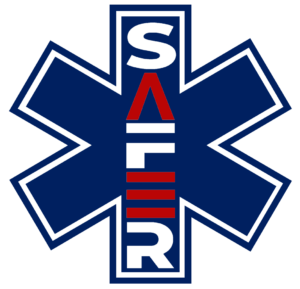 The Project for Stopping the Accident Fatality rise by EMS development and Road safety (SAFER) is an ODA-utilized technical cooperation project adopted as part of the JICA Grassroots Technical Cooperation Project (FY2019, 1st round). It was implemented from June 24, 2021, to July 31, 2024. The SAFER project, in collaboration with the Japan International Cooperation Agency (JICA), is an interdisciplinary initiative aimed at addressing the significant challenge of stopping the rise in traffic accident fatalities in Vientiane, the capital of Laos. Led by an emergency physician, the project involves numerous universities and experts in Japan, including information system developers and traffic engineering specialists.
The Project for Stopping the Accident Fatality rise by EMS development and Road safety (SAFER) is an ODA-utilized technical cooperation project adopted as part of the JICA Grassroots Technical Cooperation Project (FY2019, 1st round). It was implemented from June 24, 2021, to July 31, 2024. The SAFER project, in collaboration with the Japan International Cooperation Agency (JICA), is an interdisciplinary initiative aimed at addressing the significant challenge of stopping the rise in traffic accident fatalities in Vientiane, the capital of Laos. Led by an emergency physician, the project involves numerous universities and experts in Japan, including information system developers and traffic engineering specialists.
With the overarching goal of “contributing to the reduction of social and economic losses caused by road traffic injuries to the community and improving the livelihoods of the people of Laos,” the project aimed to establish an emergency medical system (EMS) to stop the increase in traffic accident fatalities in Vientiane, the capital of Laos.
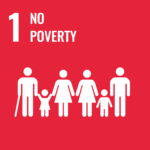
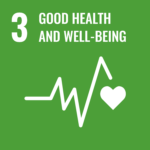
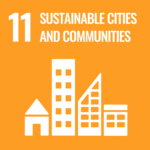
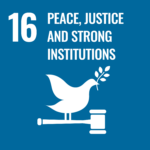
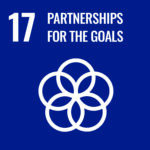
In Laos, the number of traffic fatalities has been increasing due to motorization and the development of traffic infrastructure in line with rapid economic growth, and Vientiane, the capital city, is the area most prone to traffic fatalities in the country. In addition, in Laos, volunteer first responders are responsible for lifesaving activities prior to the arrival of hospitals, and there is a large room for improvement in cooperation with hospitals. Therefore, this project is designed to reduce the number of traffic accidents and improve the life-saving rate.
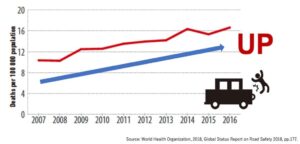
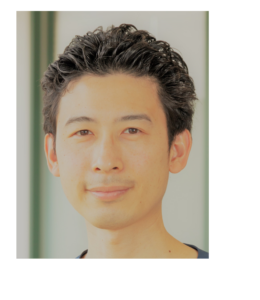 On behalf of the SAFER Project and Japanese team, it is my great pleasure to share that “Project for Stopping the Accident Fatality Rise by EMS development and Road safety” (SAFER Project) has been successfully launched on June 2021, in Vientiane Capital, Lao PDR.
On behalf of the SAFER Project and Japanese team, it is my great pleasure to share that “Project for Stopping the Accident Fatality Rise by EMS development and Road safety” (SAFER Project) has been successfully launched on June 2021, in Vientiane Capital, Lao PDR.
Universal access to quality emergency care is a fundamental function of local community. Without an access to basic emergency care, we may not be able to live with peace and safety. Especially for trauma, timely care is crucial to save lives and limbs. This is the matter of someone’s lives.
Thanks to all Lao health sectors, especially the hospitals and the rescue teams, Vientiane Capital has achieved providing universal access for necessary care for emergency patients in the past decades. However, the demand on emergency care has been expanding yearly and the number of road crash victims keeping high figures in Lao PDR. Hence, the establishment of advanced EMS system is urgently required in this country.
The SAFER Project was originally designed in 2019 with Mittaphab Hospital, Ministry of Health and Japanese consortium with the mutual partnership and recognition of the big social challenge, previously mentioned. We set the goal of SAFER Project and promised to establish a resilient EMS system. Providing quality care, with the EMS principle “Right Care at Right Place in the Right Time” is not an easy goal to be achieved. However, we believe that we can accomplish and make success in the coming years. We have courage, vision and confidence to go to the next stage.
Let’s go to the next stage together with the united efforts!
・Takaaki SUZUKI, Visiting Researcher, Institute of Medicine(Emergency and Critical Care Medicine), University of Tsukuba
Physician, Kudaka Clinic, Okinawa Prefectural Nanbu Medical Center & Children’s Medical Center
・Junji NISHIDA, President, Japan Research Institute for Social Systems (JRISS)
・Yoshiaki INOUE, Professor, Faculty of Medicine, University of Tsukuba
・Masao ICHIKAWA, Professor, Faculty of Medicine, University of Tsukuba
・Kaori OTA, Director, Osaka Office, JRISS
・Ayuki JOTO, JRISS
・Toshiyuki NAKAMURA, Designated Associate Professor, Institute of Innovation for Future Society, Nagoya University
・Toyokazu AKIYAMA, Professor, Faculty of Information Science and Engineering, Kyoto Sangyo University
・Tsuneo JOZEN, Professor, Faculty of Information Science and Arts, Osaka Electro-Communication University
・Etsuko SONE, Assistant Professor, Research Institute of Disaster management and EMS, Kokushikan University
・Takashi ISHIZAKI, Researcher, Research Institute of Disaster management and EMS, Kokushikan University
・Yusuke TAKAYAMA, Lecturer, Faculty of Medical Technology, Teikyo University
・Yoko INUI, Registered nurse, Waseda Takenoko Clinic
・Tatsuya FUJIMOTO, Freelancer
・Kensho UEDA, Administrator, International Relations Office, University of Tsukuba Hospital, University of Tsukuba
・Tetsuo YOSHIDA, President, Tetchan-Net Training Center
・Fumika YOSHIDA, Vice-president, Tetchan-Net Training Center
・Vathsana SENGSOULIDDETH, Secretary, Tetchan-Net Training Center
・Vilayphone VANNASY, Assistant Secretary, Tetchan-Net Training Center
・Boualoy SAENTHILATH, Assistant Secretary, Tetchan-Net Training Center
・Chansy VONGKEO, Assistant Secretary, Tetchan-Net Training Center
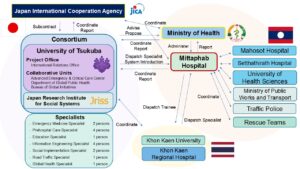
・Representative: University of Tsukuba
・Member: JRISS
・Mittaphab Hospital (Ministry of Health, Lao PDR)
International Relations Office, University of Tsukuba Hospital
2-1-1, Amakubo, Tsukuba City, Ibaraki Prefecture, 305-8576, Japan
 The letter “SAFER” is put in the logo of “star of life, ” which is used for emergency medical worldwide.
The letter “SAFER” is put in the logo of “star of life, ” which is used for emergency medical worldwide.
The six top of “star of life” logo has each meanings: Detection, Reporting, Response, On Scene Care, Care In Transit and Transfer to Definitive Care. Implementing these goals is SAFER’s ones as well.
Furthermore, SAFER’s “A” stands for road cones, and “E” implies cross walk. These emphasizes the importance of road safety.
The national flag of Laos is colored with red, blue, and white. Our logo’s color stems from them likewise.
The articles, photos, illustrations, and other content on this website are protected by copyright law. Therefore, unauthorized reproduction, copying, duplication, translation, etc., without the permission of the copyright holder is prohibited by law. If you wish to reproduce any content, please contact us at the email address below.